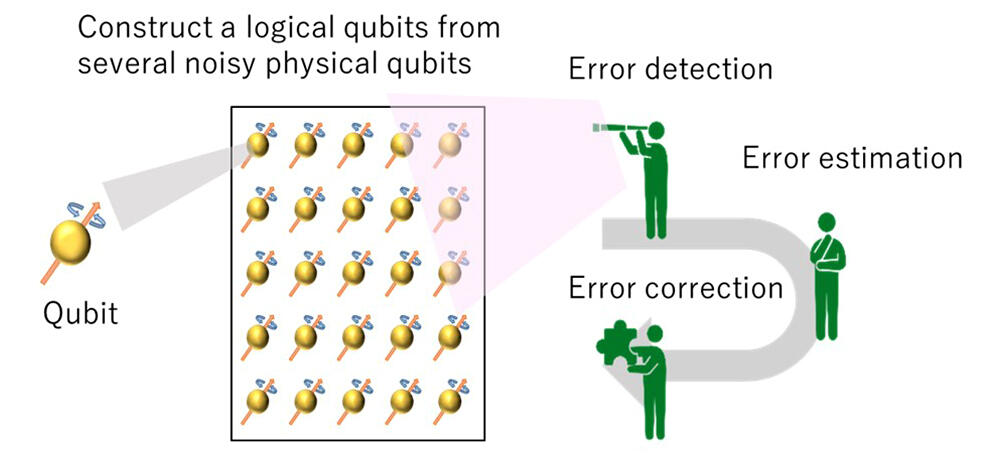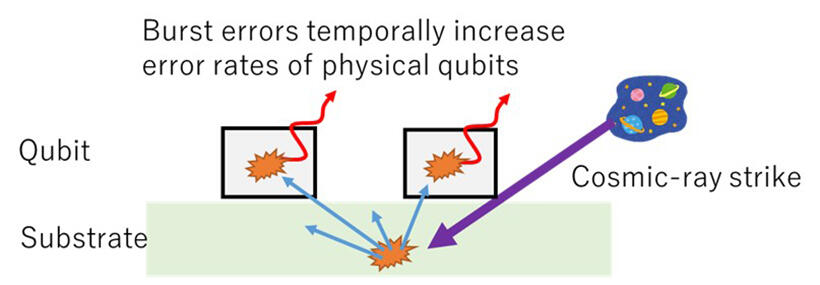Nippon Telegraph and Telephone Corporation (NTT), Kyushu University, and the University of Tokyo have proposed the world's first architecture to dynamically correct errors in accordance with quantum computer operations. This error correction method will significantly reduce the impact of burst errors, which have a significant hurdle in the development of error-resistant quantum computers.

Provided by NTT
Errors can occur in qubits simply from the information they hold leaking out. This characteristic means that environmental noise that does not impact non-quantum computers can also cause errors. Recent developments in quantum technology have increased the number of controllable qubits. However, increased integration has led to the realization that changes in the characteristics of errors during computation, which have a low probability of occurring, significantly impact the performance of quantum error correction. This issue means quantum computing experts must also address burst errors caused by cosmic rays.
The group's proposed architecture indicates that adding additional logic units to the control mechanisms of the regular computers that control quantum computers will significantly reduce the duration and extent of burst errors in superconducting qubits caused by cosmic rays. This method can be applied to any burst error that satisfies specific characteristics, regardless of the device.

Provided by NTT
The architecture is based on anomaly detection, dynamic code scheme modifications, and re-execute error estimation. Anomaly detection techniques are first used to detect the occurrence of burst errors with a short delay. For this method, the group proposed a technique to detect burst errors based on the statistical behavior of parity values, which are used as hints for error estimation rather than directly measuring the qubits.
Once a burst error is detected through anomaly detection, two mitigation procedures are implemented. The first involves switching immediately to a code scheme that is less efficient but more tolerant of burst errors, reducing the effect of burst errors after detection to almost zero. The group proposed a mechanism to perform interrupt processing with a small overhead for this purpose. Then, by rewinding the state to before the burst error arose and then performing more accurate error estimation based on knowing that a burst error has occurred, the impact of the burst error between its occurrence and detection can be further mitigated.

Provided by NTT
The team also showed that incorporating these additional mechanisms into the controller does not affect the quantum computer's speed.
Professor Masato Koashi of the School of Engineering, the University of Tokyo, said, "This is an important development for the realization of large-scale error-tolerant quantum computing."
This article has been translated by JST with permission from The Science News Ltd.(https://sci-news.co.jp/). Unauthorized reproduction of the article and photographs is prohibited.




